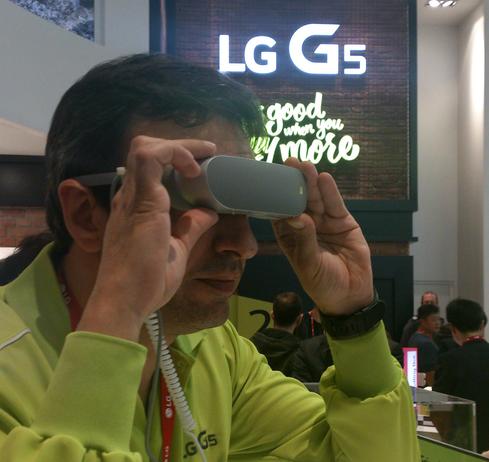McDonald's Is Getting Into VR And So Should You
McDonald's is experimenting with a virtual reality Happy Meal that could have real implications for VR in the enterprise.


5 Hot Virtual Reality Picks From MWC 2016
5 Hot Virtual Reality Picks From MWC 2016 (Click image for larger view and slideshow.)
What does the latest McDonald's latest promotional experiment, incorporating virtual reality games into its Happy Meals, have to do with your enterprise? For starters, it's a mass-market undertaking that will expose VR to millions of potential users. And that, in turn, could lead to your workforce coming in and demanding to see it applied in their office collaboration tools.
McDonald's Happy Meals are the cute little children's meal boxes that are used to serve food along with the toys your kids love (and you attempt to throw away when they aren't looking). Beginning March 5, McDonald's is experimenting in Sweden with a Happy Meal box that will fold up into a VR viewer, similar to Google Cardboard. There is a game kids can play with the makeshift VR viewer, which the company is calling Happy Goggles.
[ Where is Apple's VR? Read Apple Virtual Reality Efforts Get Boost With New Hire. ]
And you're probably wondering how, exactly, does this affect my enterprise?
Presently, VR headsets carry a high price point that makes them difficult to justify in the enterprise (unless, perhaps, you work for a videogame company). Oculus Rift, and other more expensive VR offerings, include surround sound, true depth-of-field, and amazing graphics. And most of those offerings cost between $300 and $700. That makes them pretty cost-prohibitive for an enterprise looking to try some VR experiments.
What's needed is a low point of entry to get users acclimated to VR. Eventually, this could cause a groundswell of interest that will result in workplace-specific VR tools that might aid in collaboration and communication.
Google Cardboard fits the bill nicely. Graphics are good enough for most training efforts. It is easy to deploy, and it counts on hardware that is already common in the enterprise.
The difference between Google Cardboard and McDonald's Happy Goggles is one of scale. Google has already shipped an impressive 5 million Google Cardboard viewers. Well, impressive until you consider this: Each year, McDonald's distributes 1.5 billion toys worldwide, and every one of those could potentially include a folding VR viewer. If the McDonald's Happy Meal experiment with VR goes well, the exposure to VR changes worldwide.
If you can fold tab A into slot B, you can try VR. Here's the McDonald's demo:
Of course, VR has already been big news this year. The much anticipated Oculus Rift ships this month. I had a wonderful experience with it as part of the Super Bowl 50 festivities. VR was one of the hot topics at this year's Mobile World Congress, with multiple entertainment and technology companies getting into the act.
I'm not expecting you fly to Sweden and buy a bunch of Happy Meals for your staff so they can train on VR. What I'm suggesting is that Happy Goggles, should they become more widespread, will eventually have your staff asking you why you aren't investing in VR.
When that time arrives, you will need to come up with a roadmap for deploying and securing it. There will be training software to develop. There will be collaboration tools and network bandwidth to invest in. Not to mention, if VR headsets become a collaboration tool, they'll create new endpoints to secure. You'll also have to develop best practices for using VR in office spaces designed for people who can usually see the real world. And, perhaps worst of all, you'll have a format war on your hands, as there are a plethora of early competitors in VR.
VR is about to be the next communication and collaboration tool in your office. The test starts March 5. Are you going to get out in front, or will you be eating McNuggets in a few months to see what all the fuss is about?

About the Author
You May Also Like






